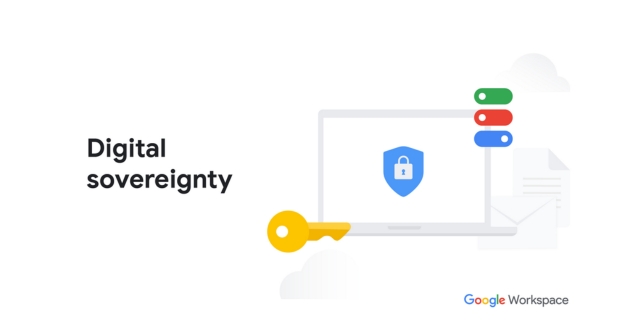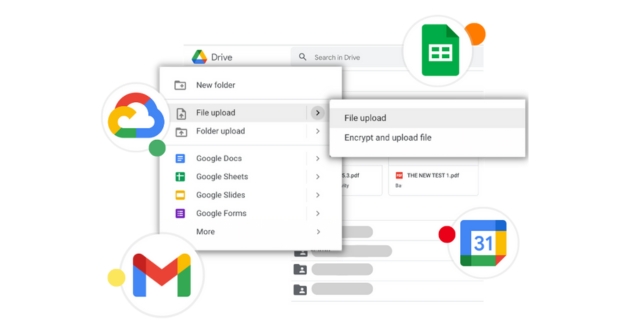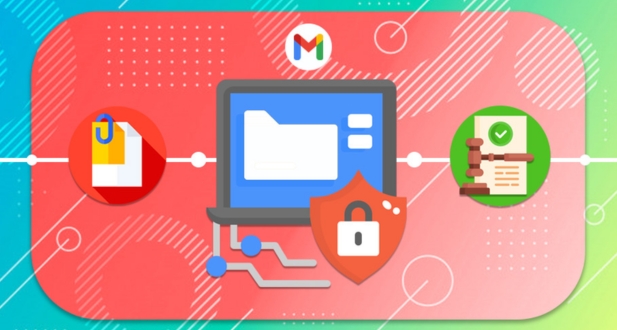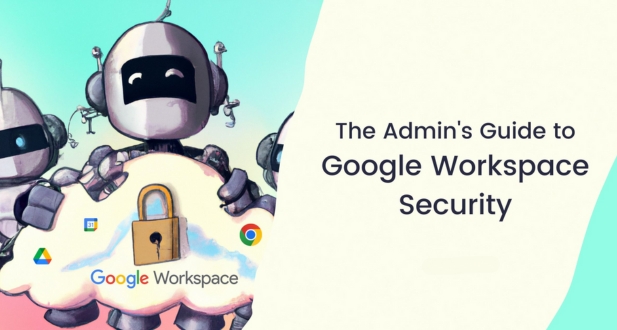Introduction
In the contemporary landscape of business operations, the reliance on cloud-based collaboration and productivity tools has become increasingly prevalent. Among the frontrunners in this domain is Google Workspace, a suite of applications designed to streamline communication, collaboration, and data management. As organizations transition to this dynamic platform, the paramount concern is ensuring the security of sensitive information housed within the Google Workspace environment.
Google Workspace’s commitment to data security is underlined by a robust set of features and protocols designed to mitigate risks and safeguard against potential threats. This exploration delves into the heart of Google Workspace security, focusing on key features that form the foundation of its protective measures.
Understanding Google Workspace Security Features
-
Access Controls and Identity Management
One of the cornerstones of Google Workspace security is the implementation of comprehensive access controls and identity management. This section will unravel the intricacies of these controls, illuminating how administrators can finely tune user permissions, establish role-based access, and uphold the principles of least privilege. Understanding these access controls is crucial for organizations seeking to fortify their defenses against unauthorized access and data breaches.
-
Data Loss Prevention (DLP) Policies
Data Loss Prevention (DLP) policies are a proactive line of defense against inadvertent data exposure. This segment will elucidate the functionalities of DLP policies within Google Workspace, providing insights into how organizations can configure rules to prevent the unintentional sharing of sensitive data. A deep dive into DLP policies will empower administrators to implement effective safeguards, ensuring compliance and averting potential data leaks.
-
Endpoint Security
As organizations embrace diverse devices for accessing Google Workspace, endpoint security becomes paramount. This section will unravel the measures Google Workspace employs to secure endpoints, including mobile devices. Topics covered will include Mobile Device Management (MDM) and endpoint verification, providing a comprehensive understanding of how organizations can bolster security at the user device level.
By exploring these foundational security features, organizations can establish a robust security infrastructure within their Google Workspace environment, laying the groundwork for a secure and productive collaborative ecosystem.
Encryption in Google Workspace
In the realm of data security, encryption stands as an indispensable shield against unauthorized access and potential breaches. Google Workspace takes a multifaceted approach to encryption, deploying measures to safeguard data at rest, in transit, and even allowing customers to exert control through the use of encryption keys. This section delves into the encryption mechanisms within Google Workspace, unraveling the layers of protection that fortify the confidentiality and integrity of user data.
-
Data Encryption at Rest and in Transit
Data Encryption at Rest:
Google Workspace employs robust encryption protocols to protect data when it is at rest, stored on Google’s servers. This involves encrypting data in such a way that even if an unauthorized entity gains access to the physical storage infrastructure, the encrypted data remains indecipherable. Delving into the specifics of these encryption algorithms and protocols provides a deeper understanding of the security measures in place during data dormancy.
Data Encryption in Transit:
During communication between users and Google’s servers, data encryption in transit ensures that information remains secure while traversing the network. The use of industry-standard encryption protocols guarantees that data remains confidential and integral, minimizing the risk of eavesdropping or interception during transmission.
-
Customer-Supplied Encryption Keys (CSEK)
Google Workspace extends a unique capability to organizations by allowing them to supply their encryption keys, offering an additional layer of control over data security. This segment will elucidate the concept of Customer-Supplied Encryption Keys (CSEK), exploring how organizations can generate, manage, and control their encryption keys. Understanding the implications and implementation of CSEK empowers organizations with greater autonomy in managing the encryption of their sensitive data within Google Workspace.
- Application-Level Encryption
Beyond encryption at rest and in transit, Google Workspace integrates application-level encryption to secure data within specific applications such as Gmail and Google Drive. This section will shed light on how application-level encryption functions, providing insights into the processes that ensure the confidentiality of data within these applications. Understanding these encryption practices is crucial for organizations handling sensitive information through collaborative tools within the Google Workspace suite.
By comprehending the nuances of encryption at various levels, organizations can wield a comprehensive defense against potential security threats, fostering a secure and trustworthy digital environment within Google Workspace.
Compliance and Auditing
In the ever-evolving landscape of data governance, compliance with industry standards and regulations is not merely a best practice but often a legal requirement. Google Workspace, cognizant of the diverse regulatory frameworks governing different sectors, has integrated robust compliance standards and auditing capabilities. This section explores the adherence to compliance standards and the utilization of auditing and activity logs within the Google Workspace environment.
Compliance Standards in Google Workspace
Adherence to Industry-Specific Regulations:
Google Workspace maintains compliance with a myriad of industry-specific regulations and standards. This segment will delve into the compliance landscape, outlining the certifications and regulations that Google Workspace adheres to. Whether in the realms of healthcare, finance, or general data protection, understanding the compliance commitments of Google Workspace is crucial for organizations navigating regulatory requirements.
HIPAA, GDPR, and More:
Explore the specific compliance standards such as the Health Insurance Portability and Accountability Act (HIPAA) and the General Data Protection Regulation (GDPR) that Google Workspace aligns with. A detailed examination of these standards provides organizations with insights into how Google Workspace safeguards sensitive data in accordance with sector-specific mandates.
-
Auditing and Activity Logs
Comprehensive Activity Logging:
Google Workspace features comprehensive activity logging capabilities that capture a spectrum of user actions within the platform. This section will elucidate the functionalities of activity logs, detailing the types of events logged and the insights they provide. Understanding the depth and scope of activity logs empowers organizations to track user interactions, monitor changes, and strengthen their overall security posture.
Security Analysis and Compliance Audits:
The logs generated by Google Workspace contribute not only to real-time security analysis but also serve as valuable resources during compliance audits. Explore how organizations can leverage these logs to conduct internal audits, respond to security incidents, and fulfill external compliance audit requirements.
By navigating the intricacies of compliance standards and auditing features within Google Workspace, organizations can ensure that their data management practices align with regulatory expectations. This understanding not only fortifies data security but also lays the groundwork for a culture of accountability and transparency within the collaborative ecosystem of Google Workspace.
Best Practices for Google Workspace Data Security
- User Education and Awareness
User education and awareness are foundational elements in establishing a robust defense against potential security threats within Google Workspace. Organizations should prioritize ongoing training programs to educate users about secure practices, phishing awareness, and the significance of responsible data handling. By fostering a culture of security awareness, users become active participants in safeguarding sensitive information. Regular training sessions, informative materials, and simulated phishing exercises contribute to a vigilant user base that can identify and mitigate potential risks.
Moreover, organizations should emphasize the importance of strong password practices, multi-factor authentication (MFA) adoption, and the secure sharing of documents. User education goes beyond technical aspects; it encompasses instilling a security mindset that becomes ingrained in everyday workflows, creating a collective commitment to data security.
- Regular Security Audits and Assessments
The proactive conduct of regular security audits and assessments is imperative for maintaining the effectiveness of security measures within Google Workspace. Organizations should institute a systematic approach to review their Google Workspace configurations, assess access controls, and evaluate data management practices. This involves employing penetration testing, vulnerability assessments, and comprehensive security audits to identify and rectify potential vulnerabilities.
Regular audits serve as a diagnostic tool, revealing areas that require attention and improvement. This practice not only ensures compliance with industry standards but also bolsters the organization’s resilience against emerging threats. It provides an opportunity to fine-tune security configurations, update policies, and address evolving challenges in the realm of data security.
Organizations should also leverage automated tools and security platforms that offer continuous monitoring and real-time threat detection. These tools enhance the effectiveness of security audits, allowing organizations to stay ahead of potential security risks and promptly respond to emerging threats.
Incorporating these best practices fosters a proactive and adaptive data security posture within Google Workspace. User education empowers individuals to be the first line of defense, while regular security audits ensure that the overall security infrastructure remains resilient and responsive to the dynamic threat landscape. Together, these practices create a comprehensive approach to data security, enabling organizations to confidently harness the collaborative capabilities of Google Workspace while safeguarding sensitive information.
Incident Response and Data Recovery
Google Workspace Incident Response and Data Recovery” is a critical aspect of managing and maintaining the integrity and security of data within the Google Workspace ecosystem. This comprehensive guide delves into the strategies, tools, and best practices for effectively responding to incidents and ensuring robust data recovery in Google Workspace.
Understanding Google Workspace Security Framework
Google Workspace provides a suite of tools that are used widely for business communications and collaborations, such as Gmail, Drive, Docs, Sheets, and more. Each of these tools stores a significant amount of data, making security and incident response a top priority.
- Security Features: Google Workspace comes equipped with various built-in security features, including advanced phishing protection, secure data storage, and user authentication protocols.
- Compliance Standards: Understanding the compliance standards that Google Workspace adheres to, such as GDPR, HIPAA, and others, is crucial for ensuring that incident response plans are aligned with regulatory requirements.
Incident Response in Google Workspace
- Identifying and Assessing Incidents: The first step in incident response is the identification and assessment of the incident’s nature and scope. This includes recognizing potential security breaches, data leaks, or system failures.
- Notification and Communication: Once an incident is identified, timely communication with stakeholders, including IT teams, management, and affected users, is essential.
- Containment and Mitigation: Containing the incident to prevent further damage is crucial. This might involve disabling affected accounts, restricting access to sensitive data, or isolating parts of the network.
Data Recovery Strategies
- Backup and Restore: Regular backups of data stored in Google Workspace are fundamental for recovery. Google Workspace offers tools for backing up data, which can be restored in case of data loss.
- Version Control and History: Utilizing version control features in Google Workspace applications like Docs and Sheets can aid in recovering data from before the incident occurred.
- Using Third-Party Tools: In some cases, third-party backup and recovery solutions can offer additional layers of protection and recovery options.
Best Practices for Incident Response and Data Recovery
- Regular Training and Awareness: Regular training sessions for employees on recognizing potential security threats and responding to incidents can greatly reduce risks.
- Testing Incident Response Plans: Regularly testing and updating incident response plans ensures that they are effective when a real incident occurs.
- Continuous Monitoring and Auditing: Implementing continuous monitoring and conducting regular security audits helps in early detection of potential incidents.
-
Incident Response Planning
Incident response planning is a critical component of an organization’s overall Google Workspace data security strategy. By developing a comprehensive incident response plan, businesses can proactively prepare for and effectively manage security incidents that may arise within the collaborative environment.
Key Components of Incident Response Planning:
Identification and Classification: Establish protocols for quickly identifying and classifying security incidents. This involves recognizing unusual activities, potential breaches, or suspicious behavior within Google Workspace.
Communication Protocols: Define clear communication channels and procedures to ensure swift and effective communication during an incident. This includes notifying relevant stakeholders, internal teams, and, if necessary, external parties.
Containment and Eradication: Outline steps for containing and eradicating the incident to prevent further damage. This may involve isolating affected systems, shutting down compromised accounts, and deploying security patches.
Forensic Analysis: Incorporate procedures for conducting forensic analysis to understand the scope and nature of the incident. This analysis informs future preventive measures and helps organizations learn from the incident.
Post-Incident Reporting: Develop a process for documenting and reporting the incident post-resolution. This includes sharing insights gained, lessons learned, and recommendations for enhancing security measures.
-
Data Backup and Recovery Strategies
Data loss is a potential risk in any digital environment, making robust data backup and recovery strategies essential within Google Workspace. Organizations should implement comprehensive backup routines for critical data, ensuring that in the event of accidental deletion, data corruption, or other unforeseen circumstances, they can recover information efficiently.
Best Practices for Data Backup and Recovery:
Regular Backups: Establish a routine for regular backups of critical data within Google Workspace. This ensures that the most up-to-date information is consistently backed up and available for recovery.
Automated Backup Solutions: Utilize automated backup solutions that seamlessly integrate with Google Workspace. These solutions streamline the backup process, reducing the risk of human error and ensuring consistency.
Offsite Storage: Store backups in secure, offsite locations to mitigate risks associated with on-premises data loss scenarios. This adds an extra layer of protection against localized incidents that could impact primary data repositories.
Tested Recovery Processes: Regularly test data recovery processes to ensure their effectiveness. This includes simulated recovery scenarios to validate that the backup mechanisms are functioning as intended.
By incorporating incident response planning and robust data backup and recovery strategies, organizations enhance their resilience to potential data security incidents within Google Workspace. These measures ensure that, in the face of unforeseen events, businesses can respond swiftly and recover data efficiently, maintaining operational continuity and minimizing the impact on productivity.
Future Trends and Considerations
-
Emerging Technologies and Security Trends
As the digital landscape continues to evolve, Google Workspace data security must align with emerging technologies and security trends to stay ahead of potential threats. Organizations should actively monitor and incorporate these advancements into their strategies to fortify their security posture.
Key Areas of Focus:
Artificial Intelligence (AI) and Machine Learning (ML): The integration of AI and ML in Google Workspace security can enhance threat detection and response capabilities. These technologies can analyze patterns, identify anomalies, and automate responses to potential security incidents, bolstering the overall resilience of the collaborative environment.
Zero Trust Security Models: Adopting a Zero Trust approach involves continuously verifying user identities and validating device health before granting access. This model minimizes the risk of unauthorized access and is increasingly becoming a best practice in data security.
Cloud-Native Security Solutions: With the growing reliance on cloud-based services like Google Workspace, organizations should explore cloud-native security solutions. These solutions are designed to address the unique challenges of cloud environments, providing enhanced visibility, control, and protection.
-
Continuous Improvement and Adaptation
The field of data security is dynamic, requiring organizations to commit to continuous improvement and adaptation. This involves regularly reassessing existing security measures, staying informed about industry best practices, and learning from incidents to enhance future resilience.
Strategies for Continuous Improvement:
Regular Security Training: Keep employees updated on the latest security threats and best practices through regular training sessions. This ensures that users remain vigilant and informed about evolving security risks.
Periodic Security Audits: Conduct periodic security audits to assess the effectiveness of existing security measures. This involves reviewing configurations, access controls, and overall data management practices within Google Workspace.
Incident Response Drills: Regularly conduct incident response drills to test the efficacy of response plans. Simulating security incidents helps identify areas for improvement and ensures that teams are well-prepared to handle real-life scenarios.
Engagement with Security Communities: Actively engage with security communities, attend conferences, and participate in forums to stay abreast of the latest security trends. Collaboration with the broader security community provides valuable insights and fosters a proactive security mindset.
By embracing emerging technologies, staying adaptable to evolving trends, and committing to continuous improvement, organizations can future-proof their Google Workspace data security strategies. This proactive approach ensures that data remains secure, compliant with industry standards, and resilient in the face of emerging threats.
Conclusion
In conclusion, the landscape of Google Workspace data security is both dynamic and intricate, demanding a multifaceted approach to safeguarding sensitive information. Through this comprehensive exploration, organizations can glean insights into fundamental security features, encryption protocols, and compliance standards within Google Workspace. Best practices, including user education, regular security audits, and robust incident response planning, serve as vital pillars for fortifying the collaborative ecosystem.
As the future unfolds, embracing emerging technologies such as AI, ML, and Zero Trust models becomes paramount, ensuring adaptive and forward-thinking security measures. Continuous improvement remains a linchpin in this journey, requiring organizations to stay vigilant, engaged with security communities, and committed to evolving with the ever-changing threat landscape.
By weaving these elements into the fabric of their Google Workspace data security strategy, organizations not only enhance their resilience to current risks but also position themselves to tackle future challenges head-on. In doing so, they can confidently harness the collaborative power of Google Workspace while upholding the integrity, confidentiality, and availability of their most valuable asset—data.
Google Workspace employs a combination of encryption, access controls, and identity management to secure user data. Encryption is applied at rest and in transit, and robust access controls ensure that only authorized users can access sensitive information.
User education is crucial in creating a security-aware culture. It involves training users on secure practices, recognizing phishing attempts, and understanding the importance of responsible data handling within Google Workspace.
Organizations can customize access controls in Google Workspace by defining user roles, setting permissions, and employing the principle of least privilege. This ensures that users have the necessary access for their roles without unnecessary permissions.
DLP policies in Google Workspace prevent the unintentional sharing of sensitive data. These policies can be configured to scan and control data sharing based on predefined rules, minimizing the risk of data leaks and compliance violations.
Yes, organizations can use Customer-Supplied Encryption Keys (CSEK) in Google Workspace, providing an additional layer of control over data encryption. This allows organizations to manage and control their encryption keys independently.









